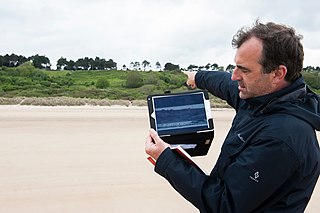
William Frederick "Bull" Halsey Jr. was an American Navy admiral during World War II. He is one of four officers to have attained the rank of five-star fleet admiral of the United States Navy, the others being William Leahy, Ernest J. King, and Chester W. Nimitz.

USS Rudyerd Bay (CVE-81) was the twenty-seventh of fifty Casablanca-class escort carriers built for the United States Navy during World War II. She was named after Rudyerd Bay, within Ketcchikan Gateway Bourough, of the Territory of Alaska. Today, the bay lies within Misty Fjords National Monument. The ship was launched in January 1944, commissioned in February, and served as a replenishment and transport carrier throughout the Mariana and Palau Islands campaign and the Philippines campaign. Later, she served as a frontline carrier, providing air cover and support for the invasion of Iwo Jima, and the Battle of Okinawa. Postwar, she participated in Operation Magic Carpet, repatriating U.S. servicemen from throughout the Pacific. She was decommissioned in June 1946, when she was mothballed in the Atlantic Reserve Fleet. Ultimately, she was sold for scrapping in January 1960.

Lawrence Rush "Rick" Atkinson IV is an American author, most recently of The British Are Coming: The War for America, Lexington to Princeton, 1775–1777, the first volume in the Revolution Trilogy. He has won Pulitzer Prizes in history and journalism.

USS Hull (DD-350) was a Farragut-class destroyer in the United States Navy during World War II. She was named for Isaac Hull.

Typhoon Cobra, also known as the Typhoon of 1944 or Halsey's Typhoon, was the United States Navy designation for a powerful tropical cyclone that struck the United States Pacific Fleet in December 1944, during World War II. The storm sank three destroyers, killed 790 sailors, damaged 9 other warships, and swept dozens of aircraft overboard off their aircraft carriers.
Alexander Rose is an author and a historian.

USS Tabberer (DE-418) was a John C. Butler-class destroyer escort in service with the United States Navy from 1944 to 1945 and from 1951 to 1959. She was scrapped in 1973.

The Pritzker Military Museum & Library is a non-profit museum and a research library for the study of military history on Michigan Avenue in Chicago, Illinois. The institution was founded in 2003, and its specialist collections include material relating to Winston Churchill and war-related sheet music.

Alex Kershaw is an English journalist, public speaker and the author of several best-selling books, including The Liberator, The First Wave, The Bedford Boys and The Longest Winter.

Colin Beavan is an American non-fiction writer and internet blogger noted for recording the attempts of his family to live a "zero impact" lifestyle in New York City for one year.

Patrick K. O’Donnell is an American author of books on military history.

John Howard Hoover was a United States Navy admiral who held several flag commands during World War II most notably those in the Central Pacific under Chester W. Nimitz. Hoover became one of Nimitz's trusted if little known admirals of the Pacific war.
David Stahel is a historian, author and senior lecturer in history at the University of New South Wales. He specialises in German military history of World War II. Stahel has authored several books on the military operations of the first six months of the Eastern Front, including on the launching of Operation Barbarossa, the Battle of Kiev (1941) and the Battle for Moscow.
Elizabeth Norman is an American author and historian. Her work focuses on nurses and the role of women in military history.

Kenneth A. Clarke serves as the executive director for Rescue Village, a humane society located in Geauga County, Ohio. He had previously served as the president and CEO of Pritzker Military Museum and Library in Chicago. He has also authored, published, edited and produced works as Kenneth Clarke and KC Clarke.
Pamela D. Toler is an American historian, who specializes in military history and women's history.
Krewasky A. Salter is a retired United States Army Colonel, museum curator and military historian. He served as the executive director of the First Division Museum. In 2022, he was appointed president of the Pritzker Military Museum & Library.
Henry Lee Plage was an American naval officer best known for his role in the recovery of sailors from Task Force 38 during Typhoon Cobra.

Fleet Weather Center San Diego (FWC-SD) is an Echelon IV command reporting to Commander Naval Meteorology and Oceanography Command and part of the Information Warfare Community. FWC-SD is located on Naval Air Station North Island in San Diego, California, and consists of approximately 400 civilian, military and contract personnel across the Indo-Pacific who are responsible for delivering meteorology and oceanographic capability to Navy, Joint, and Coalition forces operating in Third, Fifth, and Seventh Fleets.

Captain George Francis Kosco was a United States Navy aerologist and polar explorer.














